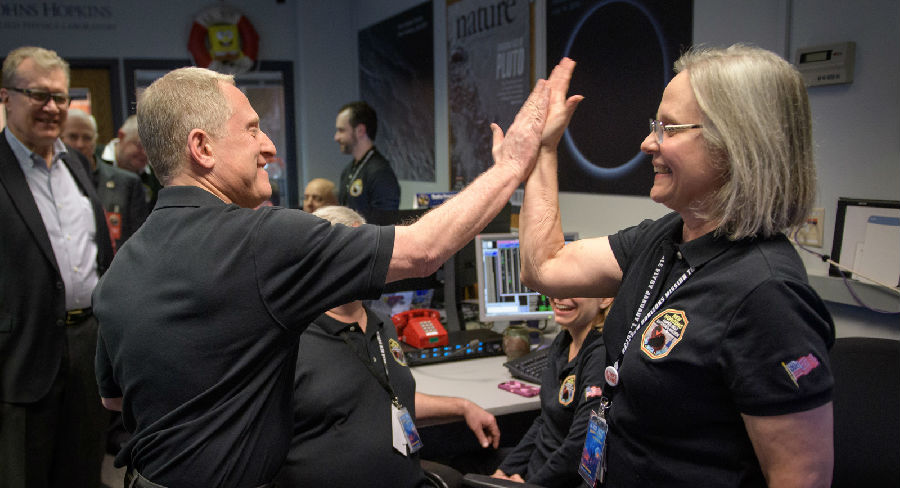Ever since the New Horizons space craft left earth in 2006, NASA scientists have had high hopes for this little unmanned ship.
自从“新视野号”航天器2006年离开地球后,美宇航局科学家对这个小型无人飞船的期望很高。
And this week it makes good on that promise. New Horizons is in a completely unexplored region of the solar system called the Kuiper Belt.
本周它实现了这一承诺,“新视野号”进入了太阳系中完全没有探索过的区域,叫作柯伊伯带。
It's a disc of material left over from the formation of the planets and it's really vast. It begins 3 billion miles (4.8 billion kilometers) from the sun.
它是圆盘状物质,这些物质是行星形成时留下的,而且面积很大,距离太阳有30亿英里。
And New Horizons is going to do a New Years Day fly by of one very special piece of that material, a small piece of rock called Ultima Thule.
“新视野号”将在新年那天飞跃一个非常特殊的物质,一个名叫“天涯海角”的石头。
This region of the solar system being so far from the sun preserves the original conditions from 4.5 billion years ago for planetary formation,
太阳系的这片区域离太阳很远,且保持着45亿年前形成行星时的原始状态,

so when we fly by Ultima we're gonna have a chance to see things the way they were back at the beginning.
当我们飞跃它时,我们有机会看到最原始的状态。
New Horizons is traveling 51-thousand kilometers per hour but should have enough time to take great pictures and gather solid information.
航天器每小时的航行速度是5.1万千米,但有足够时间照照片,收集可靠信息。
New Horizons has already imaged Pluto, but this is a much smaller target.
该航天器已拍下了冥王星,但这个目标要小得多。
This grainy sequence shows how little detail we can see of Thule, so getting such a close look is a big deal for NASA.
这一颗粒状的连续照片证明了“天涯海角”的清晰度,对于宇航局而言,如此近距离观看不同寻常。
At closest approach we're gonna try and image Ultima at 3 times the resolution that we had for Pluto, if we can accomplish that it'll be spectacular.
在这么近的距离,我们拍摄照片的清晰度可以达到冥王星的三倍,如果我们能实现,那将是壮举。
After Ultima, scientists say New Horizons has enough fuel to keep working until about 2026.
“天涯海角”之后,科学家称“新视野号”的燃料足够让它坚持工作到大约2026年。
Faith Lapidus VOA news.
法斯·拉皮德斯,VOA新闻。


